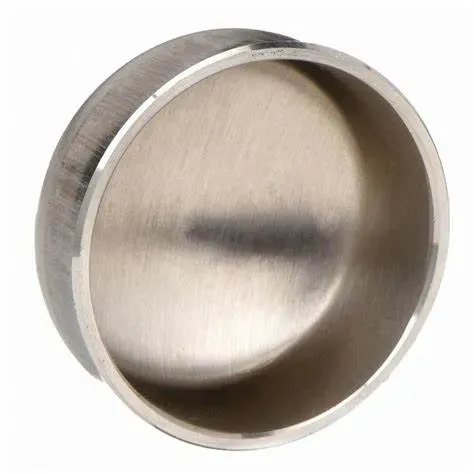-
Cangzhou Yulong Steel Co., Ltd.
-
Phone:
+86 13303177267 -
Email:
admin@ylsteelfittings.com
- English
- Arabic
- Italian
- Spanish
- Portuguese
- German
- kazakh
- Persian
- Greek
- French
- Russian
- Polish
- Thai
- Indonesian
- Vietnamese
- Zulu
- Korean
- Uzbek
- Hindi
- Serbian
- Malay
- Ukrainian
- Gujarati
- Haitian Creole
- hausa
- hawaiian
- Hebrew
- Miao
- Hungarian
- Icelandic
- igbo
- irish
- Japanese
- Javanese
- Kannada
- Khmer
- Rwandese
- Afrikaans
- Albanian
- Amharic
- Armenian
- Azerbaijani
- Basque
- Belarusian
- Bengali
- Bosnian
- Bulgarian
- Catalan
- Cebuano
- China
- China (Taiwan)
- Corsican
- Croatian
- Czech
- Danish
- Esperanto
- Estonian
- Finnish
- Frisian
- Galician
- Georgian
- Kurdish
- Kyrgyz
- Lao
- Latin
- Latvian
- Lithuanian
- Luxembourgish
- Macedonian
- Malgashi
- Malayalam
- Maltese
- Maori
- Marathi
- Mongolian
- Myanmar
- Nepali
- Norwegian
- Norwegian
- Occitan
- Pashto
- Dutch
- Punjabi
- Romanian
- Samoan
- Scottish Gaelic
- Sesotho
- Shona
- Sindhi
- Sinhala
- Slovak
- Slovenian
- Somali
- Sundanese
- Swahili
- Swedish
- Tagalog
- Tajik
- Tamil
- Tatar
- Telugu
- Turkish
- Turkmen
- Urdu
- Uighur
- Welsh
- Bantu
- Yiddish
- Yoruba

Dec . 23, 2024 08:45 Back to list
Exploring the Features and Benefits of API 5L X52M Steel Pipe
Understanding API 5L X52M A Guide to Line Pipe Specifications
In the world of pipeline construction and maintenance, adhering to standards is vital for ensuring the quality and safety of the materials used. One such standard is API 5L, which governs the specifications for line pipes used in the transportation of oil, gas, and other fluids. Within this standard lies the category of API 5L X52M, an important designation that refers to specific material requirements and properties.
What is API 5L?
The American Petroleum Institute (API) has developed the API 5L standard to specify the technical requirements for the manufacture of welded and seamless pipes intended for the transportation of gas, water, and petroleum. The 5L in the designation reflects the line pipe classification, which can be used across various industries, including oil and gas, water supply, and structural applications.
Breaking Down the X52M Designation
The term X52M provides critical information about the properties of the pipe. The X indicates that it is a line pipe, and the number 52 specifies the minimum yield strength of the material 52,000 psi. The letter M signifies that the pipe is intended for use at moderate temperatures, typically below 450°F (232°C), which is crucial for applications where temperature stability is a concern.
Chemical Composition and Mechanical Properties
The API 5L X52M pipes are primarily made from carbon steel, and their chemical composition is carefully controlled to enhance their mechanical properties. Common elements include carbon, manganese, phosphorus, sulfur, and silicon, each contributing to the overall strength and performance of the pipe.
- Yield Strength The minimum yield strength of 52,000 psi ensures that the pipe can withstand significant pressure without permanent deformation, making it suitable for high-pressure applications. - Tensile Strength The tensile strength for X52M is typically around 70,000 psi, providing an additional safety margin during operation. - Elongation Generally, X52M pipes are required to have a minimum elongation of 21%, which allows for some degree of deformation under stress without fracturing.
api 5l x52m

Manufacturing Process
The manufacture of API 5L X52M pipes involves either a seamless or a welded process. Seamless pipes are produced from a solid round steel billet, while welded pipes are made by rolling steel plates into a cylindrical shape and welding the longitudinal seam.
Both manufacturing methods are subject to quality control processes to ensure compliance with API standards. Non-destructive testing (NDT) techniques such as ultrasonic testing and magnetic particle inspection are often employed to detect any defects in the material.
Applications of API 5L X52M
API 5L X52M pipes find extensive use in various applications, particularly in the oil and gas industry. They are essential for
- Transporting Hydrocarbons These pipes are specifically designed to transport crude oil, natural gas, and other hydrocarbons from extraction sites to processing facilities or distribution centers. - Water Industries Due to their strength and durability, X52M pipes are also used in water supply systems, providing a reliable solution for transporting water under pressure. - Infrastructure Projects The robustness of X52M pipes makes them suitable for various infrastructure applications, including marine construction and large-scale civil engineering projects.
Conclusion
In summary, API 5L X52M represents a critical specification within the pipeline industry, ensuring that the materials used can withstand the demanding conditions of transporting fluids. With its defined strength and chemical composition, API 5L X52M pipes play a vital role in enhancing the safety and efficiency of pipeline systems. As industries continue to evolve and demands increase, understanding and implementing the standards set by API will remain essential for engineers and project managers in the field. Proper adherence to these specifications ensures the longevity and durability of pipelines, ultimately contributing to the success of projects worldwide.
Latest news
-
ANSI 150P SS304 SO FLANGE
NewsFeb.14,2025
-
ASTM A333GR6 STEEL PIPE
NewsJan.20,2025
-
ANSI B16.5 WELDING NECK FLANGE
NewsJan.15,2026
-
ANSI B16.5 SLIP-ON FLANGE
NewsApr.19,2024
-
SABS 1123 FLANGE
NewsJan.15,2025
-
DIN86044 PLATE FLANGE
NewsApr.19,2024
-
DIN2527 BLIND FLANGE
NewsApr.12,2024
-
JIS B2311 Butt-Welding Fittings LR/SR 45°/90° /180°Seamless/Weld
NewsApr.23,2024











